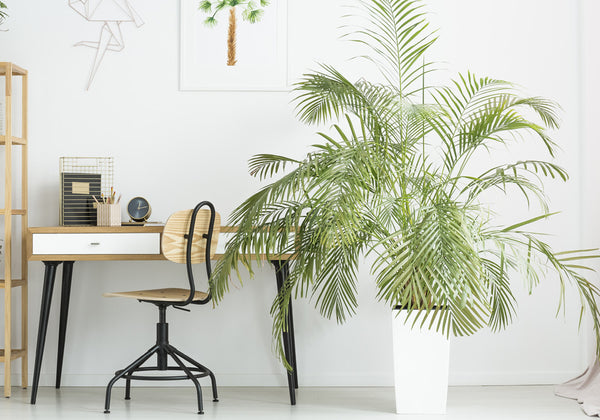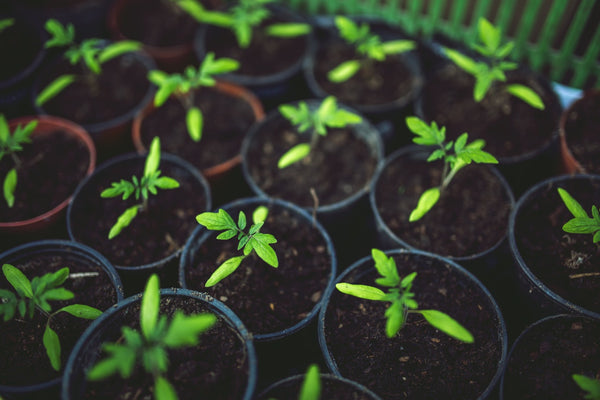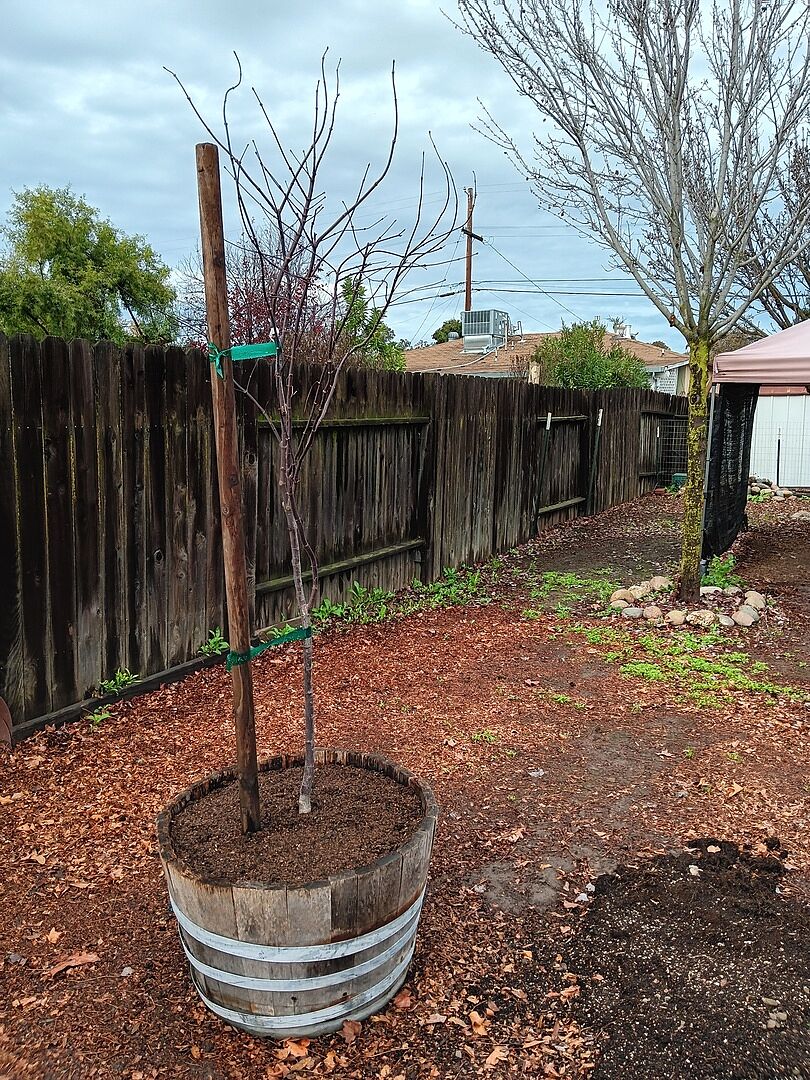How to Use a Planting Kit for Your New Tree

Last updated: Dec 23 2020

Image: Festoon House Lighting.
Vibrant color, full foliage, fresh fruit and beyond: Each houseplant is a work of art! And with our planting kit guide, not only will you have a new, great-looking focal point for any room...but you’ll also be well on your way to healthy growth and success for years to come.
What Are the Easiest Houseplants to Maintain?
First, let's cover the easiest houseplants to maintain. Planting kits are for beginners and masters alike, but we like to keep things simple!
There’s a lot to love when it comes to houseplants, from their versatility to their good looks and low-maintenance care. And with our handy guide, you’ll have all you need to pick your favorites, plant, maintain and help each variety thrive (no green thumb required).

Easy Care Houseplants
Simply position houseplants carefully, find the ideal spot and voilà – you’re ready to go. And don’t be afraid of a bit of trial and error since it can take moving your plants around a few times to find the best fit. For example, houseplants that grow best in sunny locales should be positioned near South-facing windows (for those of us in the Northern hemisphere, at least!).
From there, proper watering, pruning and the occasional fertilizer application take houseplants to the next level of health. Good health = amazing looks, fruit production, savory spice and more. And if you're still daunted, try a few of our easy care houseplants to get you started.
Unique Houseplants
When it comes to house-plant beauty, you really can’t go wrong. Each variety has something special to offer: the eye-catching chasms of the Swiss Cheese Plant, the famously full cast of the Fiddle-Leaf Fig, the sweet, succulent flavors of the Meyer Lemon. No matter your decor style, houseplants are like the perfect underscore to each space, traditional or modern.
How to Use Planting Kits for Houseplants
But as easy as it is to buy and care for houseplants, a bit of planning is a must. Whether you’re positioning your plants for greatness or choosing a watering schedule, it’s essential to ensure you’ve ticked every box of preparation. And though a plethora of houseplants almost thrive on neglect, they grow best in the right conditions with adequate care.

How to Use a Planting Kit
You’ve scouted the area, you’ve cleared the space for your new favorite picks, and you’re ready to go.
To start, take your houseplant out of its shipped nursery container and plant it in a pot that is at least a third larger than the root ball on all sides. This is important to ensure it has plenty of room to spread out and get established.
Your planting kit pot has drainage holes to avoid root rot. As you're planting, dispose of any standing water in your pot’s saucer (if you've washed it) to avoid fungal growth.
Unpacking and Watering Houseplants
- Moisten the soil in the shipped container. As you remove the plant from its container, loosen its roots gently with your fingers to separate clumps.
- Line the bottom of your new pot with a layer of clean soil, approximately three inches deep. After you’ve placed the plant in its home container, fill the sides with fresh planting mix and sprinkle a bit of the mix on the top of the root ball as well.
- As you're loading up your new plant, use a bit of the fertilizer with the planting mix. Be careful not to use the entire package - less is more!
- Once you're done, water your newly re-potted plant.
And that’s all there is to it. Planting new trees using a planting kit is as easy as 1-2-3.
How to Care for Houseplants
So, transferring and planting your houseplants is really that simple. Seriously – there’s not a lot of effort involved when it comes to most of these plants. But proper care after planting is vital for giving your selections a head start on a lush life.
Watering Your Houseplants
When you’re ready to water, ensure that the plant’s soil feels dry to the touch, and only water if it does. We use the finger check to determine soil moistness: if you have dirt on your finger after sticking it in the soil (tacky, sticky soil is best because it’s hydrated), your plant should be good. If the soil is dry and doesn’t stick to your finger, it’s time to water. Keep in mind that you should water your houseplants more frequently during dry weather, hot or cold.
And most indoor plants love an occasional misting of water. Use a spray bottle with room temperature water to mist your houseplants, especially those that prefer humidity. This can also help combat any damage from central heat and air, which tend to dry out houseplants.
Watering plants from the bottom of the pot or concentrating water delivery at the soil helps preserve foliage and keep disease away.
How to Fertilize Houseplants
Thankfully, you don’t need a lot of fertilizer for your houseplants to grow big and strong. Feed your plants with small amounts of fertilizer – the fastest method is the complete fertilizer included in your planting kit in the recommended dose for your specific plant varieties, usually applied every two to four weeks. Follow label instructions for best results.
How to Prune Houseplants
Pruning is not always necessary, but it does help to maintain a neater, cleaner appearance. Start with a clean pair of sharp scissors or gardening shears (dull blades can damage plants). Using clean tools is essential so that your plants are not exposed to bacteria, pests or other diseases during pruning.
The ideal time to prune will depend on the houseplant, however. Usually, we advise that you prune your plants at the beginning of their growing season. If you have houseplants that don’t flower, you should prune them during late winter. For those with blooms, wait until the flowers emerge before you prune. Avoid pruning your houseplants when you see unopened buds on the stems.
When you’re ready to roll up your sleeves and begin, you should start by removing any dead leaves, limbs, and flowers. After that, you should cut back overgrown branches and stems on the plants until you’ve achieve your desired look.
Getting Rid of Pests and Diseases on Houseplants
Thankfully, treating plants and mitigating these issues is simple. Most pests are eliminated when they’re sprayed with a concentrated insecticide, typically diluted in clean water. You can also water your soil or compost with a systemic insecticide that treats the houseplant’s root system.
Dusting plants is another effective and cheap way to rid your plant of diseases and pests. Just make sure to distribute the treatment powder evenly, and perform all pest and disease treatment outdoors for safety purposes.
But like we said, an ounce of prevention is worth a pound of cure. Ideal conditions, including attention and proper care, from the start help houseplants perform well.


Written by
Blair Brown
Blair is the Content Marketing Manager at FastGrowingTrees.com, and though she's not your traditional gardener, the planting world is definitely growing on her (pun intended!). She's enjoyed digging into plant care and maintenance and growing her plant collection, especially with exotic indoor varieties.























































































































































































































































